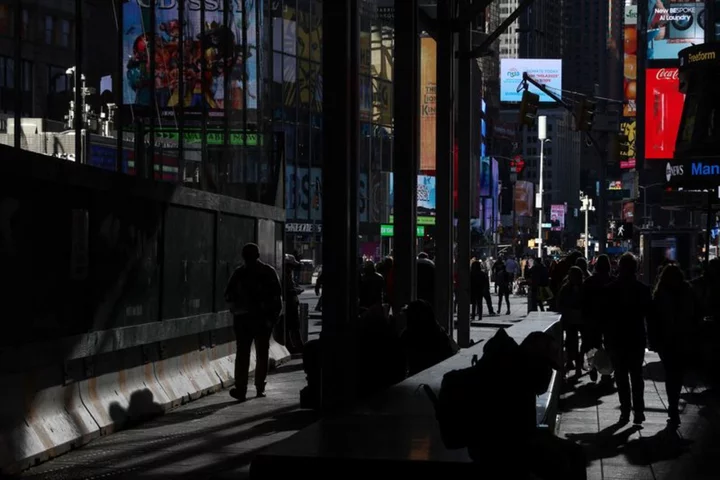By Lucia Mutikani
WASHINGTON (Reuters) -The number of Americans filing new claims for unemployment benefits increased moderately last week, while private payrolls surged in June, suggesting that the labor market remained on solid ground despite growing risks of a recession.
The reports on Thursday, which also suggested that laid off workers were experiencing shorter spells of unemployment, made it more likely that the Federal Reserve would resume raising interest rates this month after pausing in June.
"An anticipated rise in layoffs on more restrictive monetary policy is not yet appearing in the data," said Rubeela Farooqi, chief U.S. economist at High Frequency Economics in White Plains, New York. "A tight labor market will keep the rate path on an upward trajectory, until policymakers see a material rebalancing in supply and demand."
Initial claims for state unemployment benefits rose 12,000 to a seasonally adjusted 248,000 for the week ended July 1, the Labor Department said. Data for the prior week was revised to show 3,000 fewer applications than previously reported.
Economists polled by Reuters had forecast 245,000 claims for the latest week. Claims jumped to a 20-month high in the first three weeks of June to around 265,000 amid a broadening in layoffs beyond the technology sector and interest rate-sensitive industries like housing and finance.
Minnesota recently extended eligibility for state unemployment benefits to tens of thousands of hourly paid school workers during the summer break, also contributing to the rise in filings. The surge was reversed towards the end of the month, which some economists attributed to the Juneteenth holiday. But other argued that the impact of the new holiday was unknown.
Unadjusted claims increased 20,838 to 250,556 last week. There were large increases in filings in Michigan, New York, Kentucky and Ohio, some of which could be related to automobile manufacturers idling plants in summer while retooling for new models. Those increases offset declines in Texas and New Jersey.
Claims, relative to the size of the labor market, are below the 280,000 level that economists say would signal a significant slowdown in job growth. Employment growth has averaged 314,000 jobs per month this year.
U.S. stocks opened lower. The dollar slipped against a basket of currencies. U.S. Treasury yields rose.
RESILIENT LABOR MARKET
The labor market has remained resilient despite 500 basis points worth of interest rate hikes from the Fed since March 2022, when the U.S. central bank embarked on its fastest monetary policy tightening campaign in more than 40 years to stamp out inflation. A survey last month showed consumers' views of the labor market more upbeat in June relative to May.
Minutes of the Fed's June 13-14 policy meeting published on Wednesday showed "almost all participants" agreed to hold interest rates steady at that gathering. Though policymakers viewed the labor market as remaining "very tight," they "anticipated that employment growth would likely slow further."
The number of people receiving benefits after an initial week of aid, a proxy for hiring, fell 13,000 to 1.720 million during the week ending June 24, the claims report showed.
The so-called continuing claims remain very low by historical norms, indicating that some laid off workers were quickly finding new employment.
The claims data has no bearing on June's employment report, scheduled for release on Friday.
June's employment prospects received a boost from the ADP National Employment report on Thursday showing private payrolls jumped by 497,000 jobs last month after rising 267,000 in May. Economists had forecast private employment increasing 228,000.
According to a Reuters survey of economists, nonfarm payrolls likely increased by 225,000 jobs last month after rising 339,000 in May. The unemployment rate is forecast slipping to 3.6% from 3.7% in May.
Persistent labor market strength was underscored by a separate report on Thursday from global outplacement firm Challenger, Gray & Christmas showing U.S.-based employers announced 40,709 job cuts in June, down 49% from May.
Andrew Challenger, senior vice president at Challenger, Gray & Christmas, said companies tended to announce fewer job cuts in June, but added that "it is also possible that the deep job losses predicted due to inflation and interest rates will not come to pass, particularly as the Fed holds rates."
Companies announced 187,793 layoffs in the second quarter, down 31% from the January-March period's tally.
(Reporting by Lucia Mutikani; additional reporting by Safiyah Riddle; Editing by Chizu Nomiyama)









